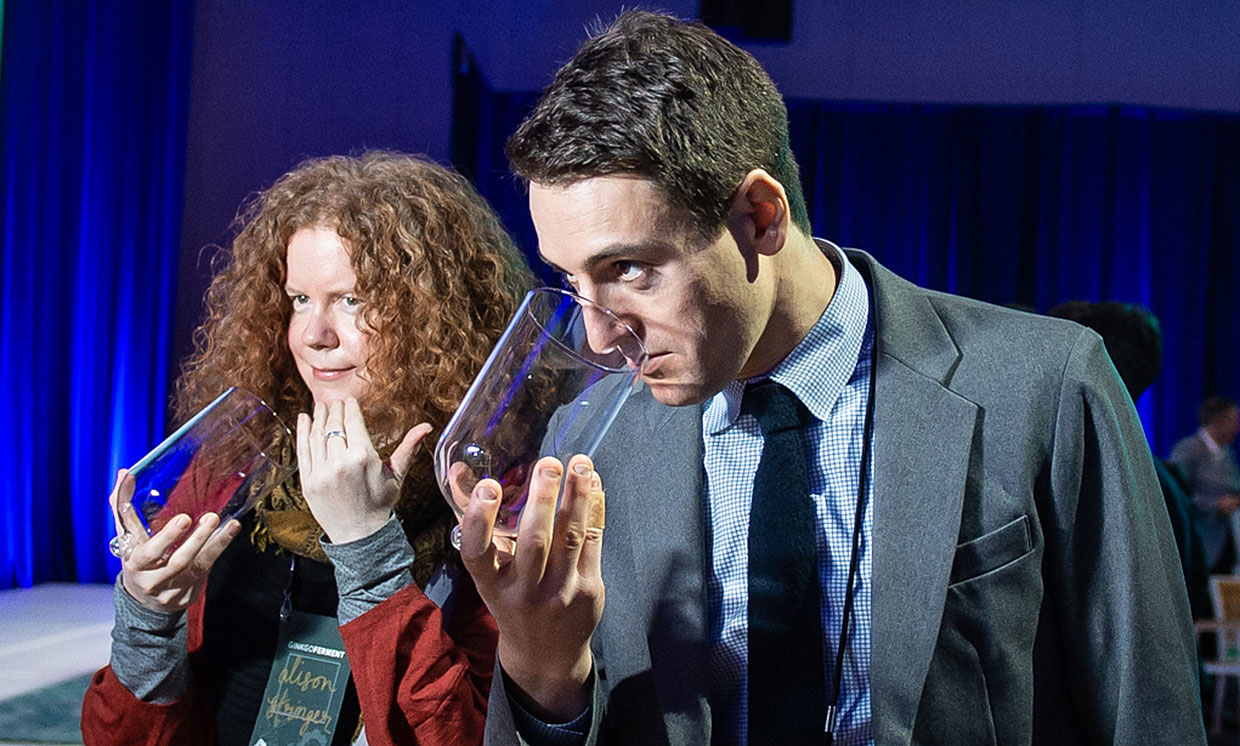Move aside, Chanel No. 5. Scientists have now created a scent that’s even older than the iconic perfume, even if it has only just wafted into human nostrils for the first time in more than 100 years.
That’s because the piney, earthy perfume derives its fragrance compounds from a Hawaiian hibiscus flower that vanished from the dry-land forests of Maui in the early 1910s.
Researchers at Ginkgo Bioworks, one of the largest synthetic-biology companies in world, succeeded in resurrecting the smell by expressing the genes needed for making the defunct flower’s pungent aroma molecules in microbes. Ginkgo unveiled—and demoed—the new perfume at the company’s inaugural annual meeting in Boston last week.
It’s like “Jurassic Park, but for perfume,” says Ginkgo’s creative director, Christina Agapakis.
In the ’90s-era book-turned-film franchise, scientists at the fictional biotech company InGen revived dinosaurs by first extracting DNA from drops of blood fossilized within insects trapped in amber. They then decoded the sequence, filled in gaps from the frog genome, synthesized the resulting hybrid DNA, and finally injected the genetic material into ostrich eggs to make lawyer-eating Tyrannosaurus rexes and kitchen-roaming velociraptors.
Scientists at Ginkgo did something similar for their “eau de Hibiscadelphus wilderianus”—to use the taxonomic name of the bygone Hawaiian mountain hibiscus plant. But, “our mosquitoes are 19th-century naturalists,” Agapakis says. The Ginkgo team used modern plant DNA instead of frog DNA to fill in the missing pieces, and yeast cells served as stand-ins for eggs when it was time to express their reconstructed genes.
To start off, Agapakis and her colleagues traveled across town to the Harvard University Herbaria, home to millions of dried and pressed plant specimens, including many from long-departed species.
They took small snippets of tissue from around a dozen plants, including the Falls-of-the-Ohio scurfpea (last seen in 1881), the Wynberg conebush (last seen in 1806), and the Hawaiian mountain hibiscus (presumed extinct around 1912). They then worked with Beth Shapiro, a paleogenomicist at the University of California, Santa Cruz, to isolate and decode the ancient DNA, before taking a Jurassic Park–like approach to genetic reconstitution.
Back in the company’s robot-filled organism-design lab—which last week expanded for a fourth time to accommodate the engineering of mammalian cells—Ginkgo scientists went through a highly structured trial-and-error design process to synthesize biochemical recipes for making aromatic oils called terpenes.
In total, they fashioned around 2,000 gene variants, each a hybrid of modern plant DNA and centuries-old sequences from the hibiscus, scurfpea, conebush, or other extinct plants. All that genetic material was manufactured in a DNA synthesizer; liquid-handling robots added the gene snippets to yeast cells, and mass-spectrometry machines analyzed the resulting terpene molecules.
Agapakis sent the terpene profiles to an olfactory artist named Sissel Tolaas, who mixed and matched the odor molecules into a few pleasant-smelling arrangements. The engineered yeast cells responsible for making those desired terpenes were then grown in large fermentation vats for mass production.
The Ginkgo team is not the first to reconstruct ancestral enzymes from archived specimens in living cells. Other scientists have expressed DNA from Neanderthal remains in monkey cells to better understand hair and skin pigmentation in our long-lost hominid cousins, or put woolly mammoth genes into human cells to study how the extinct Siberian beast survived so well in the extreme cold.
Nor is Ginkgo alone in its high-tech approach to perfume production. Just last week, IBM announced that its researchers are working on an artificial intelligence platform that learns how to mix and match aromatic compounds to create new fragrance combinations and scent profiles that humans might never think of. In collaboration with Symrise, a German leader in the flavor-and-fragrance industry, IBM is now rolling out the machine-learning tool as an aid for master perfumers looking to find the next Coco Mademoiselle. The first two AI-developed perfumes are expected to hit the market in mid-2019.
Yet, Ginkgo stands apart in deploying its signature design-build-test process to reactivate extinct enzymes and harvest their chemical bounty at scale. And that’s enabled the company to produce a truly timeless commercial product, albeit one that’s intended more as an art project than one to rival those by Tom Ford, Chanel, and Dior.
According to Agapakis, the de-extincted hibiscus perfume will be available for purchase as part of an art installation going on tour around the world next year, starting in February at the Georges Pompidou Center in Paris. It will then travel to the Cooper Hewitt, in New York City, and beyond.
The goal, says Agapakis, is to show, through art, the immense potential of synthetic biology and genome engineering. “You can smell something that wouldn’t be possible otherwise,” she says. “You can smell it really viscerally.”
Source: Jurassic Park for Perfume: Ginkgo Bioworks Reconstructs Scents From Extinct Plants













